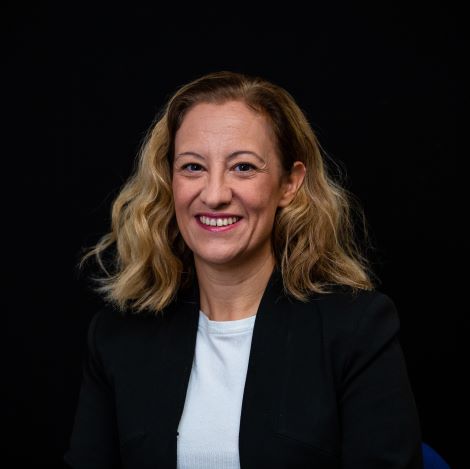12 May 2025; 13:00 – 14:00 GMT+1
Presenter: Irem Dikem
Biography
 Professor Dikmen carries out research at the interface of engineering, management, and information sciences. Her research interests relate to construction project management, mainly risk management. She combines theories and methods from various disciplines to analyse complexity, risk and resilience in projects. She uses systems thinking to explore and model project systems and engineering project organizations. She conducts research to explore actuality of projects and develop decision-support systems/tools in collaboration with industrial partners and government institutions. Based on her professional experience within the industry as a consultant in several construction projects, her vision has been to carry out constructive research that demonstrates added value/benefits for the industry and communities.
Professor Dikmen carries out research at the interface of engineering, management, and information sciences. Her research interests relate to construction project management, mainly risk management. She combines theories and methods from various disciplines to analyse complexity, risk and resilience in projects. She uses systems thinking to explore and model project systems and engineering project organizations. She conducts research to explore actuality of projects and develop decision-support systems/tools in collaboration with industrial partners and government institutions. Based on her professional experience within the industry as a consultant in several construction projects, her vision has been to carry out constructive research that demonstrates added value/benefits for the industry and communities.
Paper to be presented
Title: Towards a Climate Adaptation Roadmap for the Turkish Construction Industry – Finding from a Participatory Workshop with Industry Stakeholders
Authors: Irem Dikmen Toker, Stuart D. Green, Qamar Ayoubi, Güzide Atasoy Özcan, Emre Caner Akçay, Atefeh Aali, Güncel Vara
Link to paper: ClimateAdaptationReport-2025.pdf
Additional Link: ClimateAdapt-TR project – Climate Resilient Built Environment – CRESBE
Session Highlights:
Prof. Dikmen kindly shared the slides she used during the session: 25.05.12 MCRILG IremDikmen slides.
Summary: Climate Resilience in the Built Environment – Session Overview
Professor Irem Dikmen’s session offered a comprehensive exploration of how the construction industry must evolve to meet the dual challenges of climate mitigation and adaptation. She emphasised the importance of a systems-thinking approach to infrastructure planning, design, and delivery, and showcased current research and practical frameworks advancing climate resilience in the built environment.
Framing the Challenge
The construction sector is both a critical enabler of economic growth and a major contributor to global environmental stress:
- Accounts for 50% of raw material extraction, 30% of energy use, and 40% of CO₂ emissions globally.
- Particularly vulnerable to climate-related disasters such as floods and heat waves.
- In 2021 alone, climate hazards caused $280 billion in damages globally, with over half uninsured.
Despite these challenges, the sector also holds great promise:
- Construction makes up 15% of the global economy.
- There are clear economic incentives for change, e.g., every $1 invested in resilience can yield $4 in avoided losses.
The Need for Sector-Specific Solutions
Professor Dikmen underscored that climate solutions must be tailored for construction. Borrowing models from other sectors is insufficient. Her discussion of the UNEP 2024/25 Global Status Report highlighted both setbacks and progress:
- Bad news: The sector is off-track for 2050; emissions have increased since 2015.
- Good news: Circular practices are growing, and European renewable integration is accelerating.
From Risk to Resilience: Infrastructure as a Strategic Pivot
A key theme was the centrality of infrastructure in both mitigation and adaptation strategies:
- Examples like the 2024 flood in Spain and the Thames Barrier in the UK illustrated the spectrum between costly inaction and proactive design.
- Investing in new resilient infrastructure and retrofitting existing systems is vital to reducing future climate risk.
Bridging Fragmented Agendas
Professor Dikmen identified a recurring issue in the policy landscape: the disconnect between climate mitigation and adaptation agendas. She argued for integrated planning that unifies:
- Environmental and economic concerns
- Regulatory frameworks and smart city agendas
- Energy, transport, public health, and ecosystem services
This integration demands inter-ministerial coordination, long-term planning, and participation across public and private sectors.
Türkiye Case Study: Climate Adapt-TR Project and Participatory Workshop
Professor Dikmen presented the Türkiye case study as a practical application of systemic climate resilience principles. Türkiye faces significant climate vulnerabilities, with estimates suggesting 3% of its GDP is lost annually due to climate-induced disaster damages. These vulnerabilities span sectors, particularly transport, agriculture, and human well-being.
As part of the ClimateAdapt-TR Project, a participatory workshop was held on 19 November 2024 with 27 representatives from ministries, the private sector, academia, and NGOs. The workshop was designed to support Priority 3 of the Climate Resilient Built Environment Research Cluster (CRESBE) agenda, focusing on narratives and institutional contexts for climate adaptation.
The workshop used participatory methods such as post-it notes, reflections, and thematic clustering to identify key adaptation challenges. These included:
- Materials and Methods
- Finance
- Systemic Barriers
- Regulations and Design Standards
- Awareness and Coordination
To develop strategic action points, participants were organised into four thematic groups—Infrastructure, Finance, Governance, and Projects.
The workshop concluded with the formation of a comprehensive Climate Adaptation Agenda covering nine dimensions of action (physical, regulatory, strategic, institutional, financial, technological, project-based, educational, and data-driven). The insights were compiled into a formal report for governments, companies, and international stakeholders, offering a roadmap for integrated and systemic adaptation planning in Türkiye’s construction sector.
Q&A Summary
Q: Given the disconnect you’ve seen, who has been the best group to consider integrated solutions?
A: Professor Dikmen explained that there is no single actor. Effective integration must come through cross-stakeholder collaboration. In Türkiye, for example, ministries responsible for disaster response and environmental policy must work together. Dialogue and cooperation across institutions are essential.
Q: How was the workshop conducted, particularly with participants discussing different aspects of risk?
A: The workshop welcomed diverse voices across sectors. Government participants were more vocal about climate risk and urgent actions, while private sector representatives highlighted the importance of finance and risk transfer mechanisms. . The key was to balance perspectives and create space for shared understanding. Starting the session by focusing on challenges was noted as an effective way to build openness and encourage honest dialogue.
Q: How were the extra costs of resilience evaluated, particularly the claim of US$1 invested yielding US$4 in return?
A: Professor Dikmen noted that although uncertainty exists everywhere, governments can and should make informed decisions based on calculated climate risk scenario and building structural vulnerabilities. The return estimates are based on comparative modelling of avoided damages versus adaptation investments.
Q: Do stakeholders deliberately avoid engaging with data due to fear of investment costs (wilful ignorance)?
A: Professor Dikmen acknowledged that while wilful ignorance may sometimes exist, the real issue is pervasive uncertainty. However, despite not having perfect information, governments have access to climate risk data and aim to develop structural vulnerability data, which they can use to guide strategic investments.
Highlights drafted by Daniel Mardy, approved by Prof. Irem Dikmen

